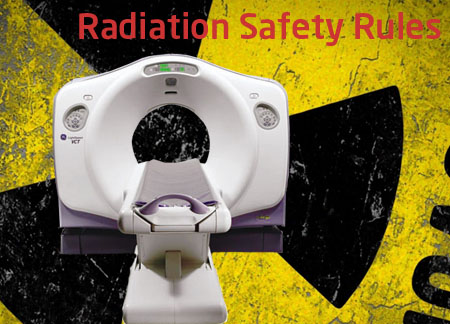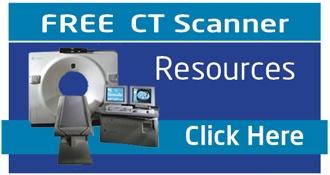Let me say at the outset that I am a Salesperson and I am proud of that. I have sold innovative, life-changing products into the diagnostic imaging market for over thirty years and it is a rewarding profession. I vividly remember the days of single slice CT scanning and providers increasing the dose on patients to get a more diagnostic image. It was routine practice when needed and not so much as a second thought was given in most circumstances about increased patient dose in order to improve diagnostic image quality. With the advent of helical scanning and multi-slice capabilities, the focus on CT dose in healthcare became a reality.
 After reading Are you ready to comply with new radiation safety rules?” on February 6, 2014 by Neomi Mullens, a article in Aunt Minnie, I was impressed that there were so many responses to the article. It demonstrates that the focus on CT utilization and dose management remains a critical concern to all in healthcare today.
After reading Are you ready to comply with new radiation safety rules?” on February 6, 2014 by Neomi Mullens, a article in Aunt Minnie, I was impressed that there were so many responses to the article. It demonstrates that the focus on CT utilization and dose management remains a critical concern to all in healthcare today.
The invention of the CT scanner in the 1970’s by Hounsfield and his team, its widespread adoption in the 1980’s and where the current state of the technology is today is a unique and phenomenal story in world history not to mention the history of healthcare. CT has saved and improved countless lives with its ability to quickly diagnose time sensitive medical conditions. CT is to healthcare as a hammer is to a carpenter. Its diverse utility will not likely be replaced by a “new” technology in our lifetime.
What I would like to point out is that there is a tremendous amount of attention, focus and action being taken by healthcare providers today to manage CT utilization and patient dose, and there are innovative products available to address these concerns.
Today, I see two primary components that must be considered when trying to get your arms around comprehensive CT dose management. The first component is routinely reducing the amount of radiation used to get a diagnostic image, in short, dose optimization on a patient-by-patient basis. The second is tracking, monitoring and recording CT dose; both dose to the patient and dose from the CT.
I would like to spend a few minutes on systematically reducing patient CT dose.
Automated, patient specific CT dose reduction is likely the harder objective for most providers to achieve. While many providers today have at least one newer CT scanner that has an OEM iterative reconstruction solution for routine low-dose scanning built into the platform, the rest of their CT’s may not. This restricts the providers ability to market low-dose CT capability to the patient population they serve as many patients will request the low-dose CT scanner at the time of their CT exam. It is not feasible that “all” patients will have access to the low-dose CT.
To further compound the problem, most providers today with more than one CT may have CT’s from different vendors. These CT’s may be “older” and cannot be retrofitted with the OEM’s iterative reconstruction solution. Where the older CT scanner can be retrofitted with an IR solution, the OEM cost is usually upwards of $150K, and is also reflected in higher CT service contract costs.
Given this situation, most CT providers today manually reduce patient dose by lowering mAs, adjusting kVp as a function of BMI, perfectly positioning the patient, eliminating the non-contrast study when possible and scanning only the exact distance required to cover the anatomy in question. In most cases, dose reduction of up to 30% can be achieved. Manually adjusting patient protocols requires a significant amount of time and effort by the CT technologist and radiologist, and in a busy department, this can be problematic. Even with these efforts, the potential for having to do a repeat scan due to sub-optimal results exists.
With the Affordable Care Act now the law of the land, it is simply not feasible for providers to replace all of their perfectly viable “older” CT scanners with new ones simply to achieve iterative reconstruction low-dose CT capabilities. “Aunt Minnie” recently published a report that indicated access to capital for most radiology departments is at an all time low since they have reported this metric. This is not likely to change any time soon.
I would like to invite you to take a look at an innovative, vendor neutral Iterative Image Reconstruction solution that works on any CT scanner with four detector rows or greater. The solution can be used with any CT scan protocols that you currently use and will allow you to reduce patient dose by 50% or greater upon installation. The CT Technologists workflow is not changed in any appreciable way. The product typically installs in three days with no CT downtime. Perhaps most important is that the image quality is identical to your standard dose acquisition exams. Finally, the product is available at a fraction of the cost of an OEM solution and is now included on the Premier, MedAssets and HealthTrust Purchasing Group contracts. The product is called SafeCT and it may be the “best kept secret” in radiology.
SafeCT is a novel, Iterative Image Reconstruction CT dose reduction solution that aligns perfectly with the requirements of the Affordable Care Act. SafeCT allows you to extend the useful life of your CT scanners, reduce operating costs due to reduced CT tube usage, improve low-dose CT examination results when compared to manual dose adjustments and improve safety for the patients you serve.
Other blogs ypu may have missed:
- SafeCT - Dr. Shapiro's Take on SafeCT!
- Trends: Managing and Reducing CT Radiation Doses
- Q & A: How One Practice Achieved Extreme Low Dose
- Concern Over Radiation Risks from CT Imaging?




